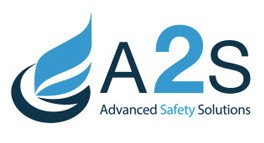Fast delivery
Satisfied or reimbursed
Secured payment
Pay safely
Need help ?
Check our FAQ
Personnalised study & support
Contact-us
ATEX zones: definitions, zoning, solutions ATEX classifications of equipment All about ATEX regulations ATEX risks ATEX standards: what to remember European ATEX directives ATEX protection methods ATEX markings and logos IP protection ratings Gas info |
ATEX RANGE
Audible signalling
Ex-proof Visual Signaling
Combined signalling
ATEX and industrial loudspeakers
Ex Manual Call Point
ATEX landline telephone
ATEX mobile phone and smartphone
Ex tablets
Ex radio and wireless solutions
Explosion-proof headsets and headphones
Industrial and Ex-proof Linear Luminaires
Explosion proof Floodlights
Bulkheads and Pendant Light Fittings
Portable | Ex Lamps
Junction boxes
Explosion proof cabinets and boxes
Cable glands
Explosion proof plugs and sockets
Safety switches
Ex control unit
Grounding systems
Automation
Détecteurs sécurité intrinsèque l Détecteurs ATEX
Gas and flame
Access control
Ex camera & CCTV
Process heaters
Explosion-proof Fan Units
Refrigeration
INDUSTRY RANGE
Manual call point
High gain sounders
Manual sirens
Call terminal, hands-free phone
Waterproof and ATEX industrial telephones
Industrial warning Signals
Cabins
Phone accessories
Fire safety
Solar lighting
ATEX training Site Audit Custom products |
Documentation News Our achievements FAQs How to return your A2S products |
Who are we ? Sectors A2S Export Warranty |
Safety in potentially explosive atmospheres (ATEX) is not limited to the application of rules and regulations; it requires the adoption of a security culture deeply rooted in every aspect of the company's operations. A strong ATEX safety culture is essential to prevent accidents and protect workers and facilities. This article explores strategies for developing a company culture that prioritizes safety in risk areas, ensuring a safe and compliant work environment.
Awareness and understanding of ATEX risks are the foundations of a solid safety culture. It is crucial that every employee, from field operators to senior managers, understand the basic principles of explosive atmospheres, as well as the specific risks associated with their workplace. Regular training programs, workshops and emergency simulations should be implemented to reinforce this knowledge and ensure that safety procedures are well understood and applied.
Encouraging open and honest communication within the organization is essential to identifying and managing security risks. Employees should feel comfortable reporting potential hazards, minor incidents or even near misses without fear of retaliation. This not only allows security issues to be addressed immediately, but also allows you to learn from these incidents to avoid their recurrence.
Management commitment is a key factor in developing a strong safety culture. Leaders must lead by example by strictly following safety rules and procedures and prioritizing safety in all operational decisions. Recognizing and rewarding positive safety behaviors can also encourage employees to adopt and maintain safe practices.
Security should not be seen as an additional burden or task, but rather as an integral part of daily operational processes. This includes facility design and maintenance, equipment selection, and task scheduling. By integrating safety considerations from the start, businesses can reduce explosion risks and improve operational efficiency.
An effective safety culture is based on regularly evaluating current practices and adapting to new information, technologies and feedback. Security audits, incident analyzes and process reviews should be conducted regularly to identify areas of improvement and implement proactive changes. This demonstrates a commitment to continuous safety improvement.
Encouraging collaboration and knowledge sharing not only within the company but also with external partners, such as equipment suppliers, regulators and other companies in the industry, can enrich the safety culture. Learning from others' experiences and sharing best practices helps raise security standards across the industry.
Integrating an ATEX safety culture within your company requires commitment at all levels of the organization, ongoing training, open communication, and strong leadership. By implementing strategies that prioritize security in every aspect of operations, businesses can not only meet regulatory requirements, but also proactively protect their employees and assets. A strong safety culture is an investment in the sustainability and long-term success of the business.
Don't miss our newsletters & keep in touch for ATEX information and our products
Contact us
Copyright © 2021 A2S Atex. All rights reserved | Made with ♡ by YEAH Communication ©
This is a standard cookie notice which you can easily adapt or disable as you like in the admin. We use cookies to ensure that we give you the best experience on our website.Read more
Your cart
